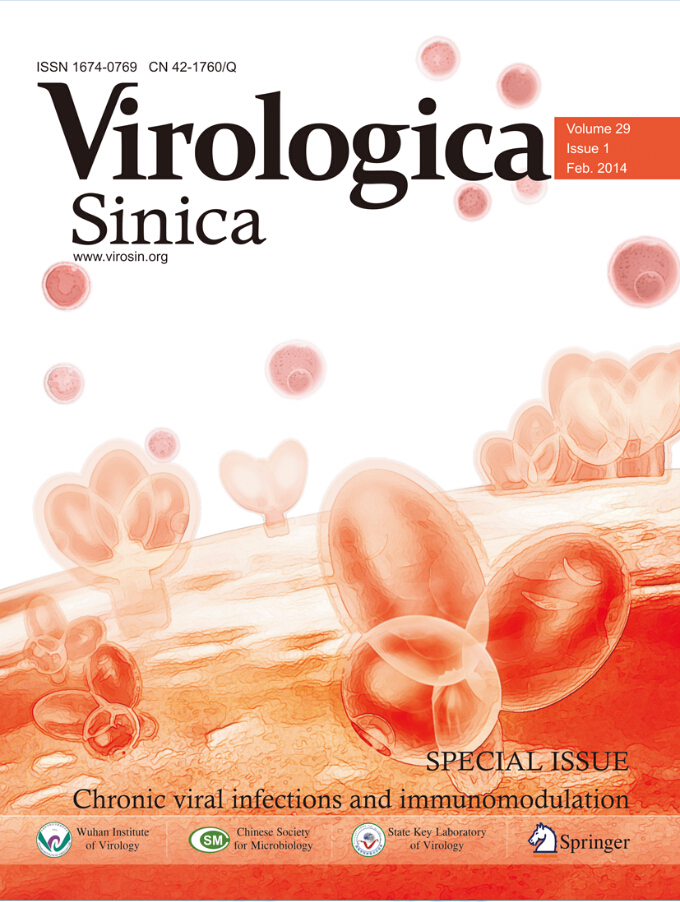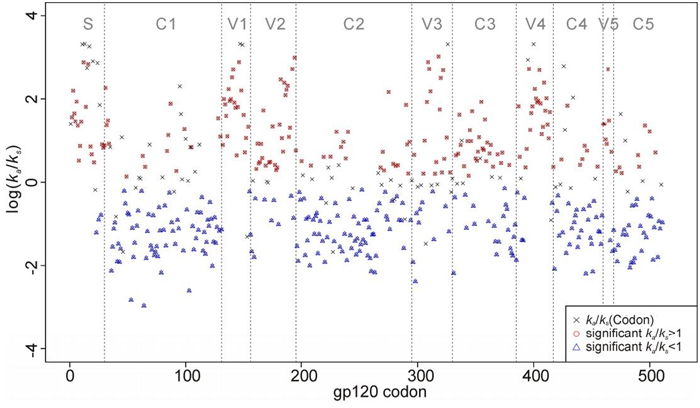-
Chen L, Lee C. 2006. Distinguishing hiv-1 drug resistance, accessory, and viral fitness mutations using conditional selection pressure analysis of treated versus untreated patient samples. Biol Direct, 1:14.
doi: 10.1186/1745-6150-1-14
-
Chen L, Perlina A, Lee C J. 2004. Positive selection detection in 40, 000 human immunodeficiency virus (hiv) type 1 sequences automatically identifies drug resistance and positive fitness mutations in hiv protease and reverse transcriptase. J Virol, 78(7): 3722-3732.
doi: 10.1128/JVI.78.7.3722-3732.2004
-
Choisy M, Woelk C H, Guégan J F, and Robertson D L. 2004. Comparative study of adaptive molecular evolution in different human immunodeficiency virus groups and subtypes. J Virol, 78(4):1962-1970.
doi: 10.1128/JVI.78.4.1962-1970.2004
-
Delport W, Poon A F, Frost S D, and KosakovskyPond S L. 2010. Datamonkey 2010:a suite of phylogenetic analysis tools for evolutionary biology. Bioinformatics, 26(19):2455-2457.
doi: 10.1093/bioinformatics/btq429
-
Deng X, Liu H, Shao Y, Rayner S, and Yang R. 2008. The epidemic origin and molecular properties of b' a founder strain of the hiv-1 transmission in asia. AIDS, 22(14): 1851-1858.
doi: 10.1097/QAD.0b013e32830f4c62
-
Graf M, Shao Y, Zhao Q, Seidl T, K?stler J, Wolf H, and Wagner R. 1998. Cloning and characterization of a virtually full-length hiv type 1 genome from a subtype b'-thai strain representing the most prevalent b-clade isolate in china. AIDS Res Hum Retroviruses, 14(3): 285-288.
doi: 10.1089/aid.1998.14.285
-
Huelsenbeck J P, Jain S, Frost S W, and Pond S L. 2006. A dirichlet process model for detecting positive selection in protein-coding dna sequences. Proc Natl Acad Sci U S A, 103(16): 6263-6268.
doi: 10.1073/pnas.0508279103
-
Katoh K, Misawa K, Kuma K, and Miyata T. 2002. Mafft: a novel method for rapid multiple sequence alignment based on fast fourier transform. Nucleic Acids Res, 30(14):3059-3066.
doi: 10.1093/nar/gkf436
-
Kimura M. 1968. Evolutionary rate at the molecular level. Nature, 217(5129):624-626.
doi: 10.1038/217624a0
-
Li W H. 1993. Unbiased estimation of the rates of synonymous and nonsynonymous substitution. J Mol Evol, 36(1):96-99.
doi: 10.1007/BF02407308
-
Li Z, He X, Li F, Yang Y, Wang Q, Wang Z, Xing H, Takebe Y, and Shao Y. 2012a. Tracing the origin and history of hiv-1 subtype b' epidemic in china by near full-length genome analyses. AIDS, 26(7): 877-884.
doi: 10.1097/QAD.0b013e328351430d
-
Li Z, Huang Y, Ouyang Y, Shao Y, and Ma L. 2012b. CorMut: Detect the correlated mutations based on selection pressure. R package version 1. 2. 0.
-
Liu J, Bartesaghi A, Borgnia M J, Sapiro G, and Subramaniam S. 2008. Molecular architecture of native hiv-1 gp120 trimers. Nature. 455(7209):109-113.
doi: 10.1038/nature07159
-
Mao Y, Wang L, Gu C, Herschhorn A, Xiang S H, Haim H, Yang X, and Sodroski J. 2012. Subunit organization of the membrane-bound hiv-1 envelope glycoprotein trimer. Nat Struct Mol Biol. 19(9):893-899.
doi: 10.1038/nsmb.2351
-
Murrell B, Wertheim J O, Moola S, Weighill T, Scheffler K, and Kosakovsky Pond S L. 2012. Detecting individual sites subject to episodic diversifying selection. PLoS Genet. 8(7): e1002764.
-
Nei M, and Gojobori T. 1986. Simple methods for estimating the numbers of synonymous and nonsynonymous nucleotide substitutions. Mol Biol Evol. 3(5):418-426.
-
Nielsen R, and Yang Z. 1998. Likelihood models for detecting positively selected amino acid sites and applications to the hiv-1 envelope gene. Genetics. 148(3):929-936.
-
Pancera M, Majeed S, Ban Y E, Chen L, Huang C C, Kong L, Kwon Y D, Stuckey J, Zhou T, Robinson J E, Schief W R, Sodroski J, Wyatt R, and Kwong P D. 2010. Structure of hiv-1 gp120 with gp41-interactive region reveals layered envelope architecture and basis of conformational mobility. Proc Natl Acad Sci U S A. 107(3):1166-1171.
doi: 10.1073/pnas.0911004107
-
Pond S L, Frost S D, Grossman Z, Gravenor M B, Richman D D, and Brown A J. 2006. Adaptation to different human populations by hiv-1 revealed by codon-based analyses. PLoS Comput Biol. 2(6):e62.
-
R Development Core Team. 2006. R: A Language and Environment for Statistical Computing. R version 3. 0. 0;
http://www.R-project.org.
-
Ratner L, Haseltine W, Patarca R, Livak K J, Starcich B, Josephs S F, Doran E R, Rafalski J A, Whitehorn E A, and Baumeister K. 1985. Complete nucleotide sequence of the aids virus, htlv-iii. Nature. 313(6000):277-284.
doi: 10.1038/313277a0
-
Rice P, Longden I, and Bleasby A. 2000. Emboss: the european molecular biology open software suite. Trends Genet. 16(6): 276-277.
doi: 10.1016/S0168-9525(00)02024-2
-
Tran E E, Borgnia M J, Kuybeda O, Schauder D M, Bartesaghi A, Frank G A, Sapiro G, Milne J L, and Subramaniam S. 2012. Structural mechanism of trimeric hiv-1 envelope glycoprotein activation. PLoS Pathog. 8(7):e1002797.
-
Wang W, Nie J, Prochnow C, Truong C, Jia Z, Wang S, Chen X S, and Wang Y. 2013a. A systematic study of the n-glycosylation sites of hiv-1 envelope protein on infectivity and antibody-mediated neutralization. Retrovirology. 10:14.
doi: 10.1186/1742-4690-10-14
-
Wang Y, Rawi R, Wilms C, Heider D, Yang R, and Hoffmann D. 2013b. A small set of succinct signature patterns distinguishes chinese and non-chinese hiv-1 genomes. PLoS One. 8(3):e58804.












